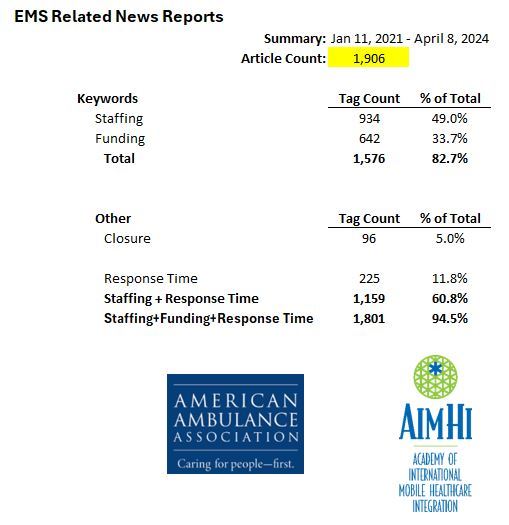Kaiser Health News source | Comments courtesy of Matt Zavadsky
This is the next in the 1-2-3…. Punch for patients and area healthcare providers. We’ve mentioned before that the volume loss, coupled with the looming changes in the payer mix, will continue to have a big impact on healthcare systems, including EMS agencies.
Everyone should be keeping a close eye on this in your local communities!
Most notable quote of the article – (the same could be said about EMS agencies):
“Hawkins said federal relief money will be directed to health care providers in the coming months. Long term, however, he said this is unsustainable for Texas hospitals. If unaddressed, this financial burden on hospitals could lead to future cuts and possibly closures, he warned.
If state lawmakers don’t start addressing the state’s coverage issues soon, Hawkins predicted, it will become a significant issue during the state’s upcoming legislative session early next year.”
--------------------
In Texas, More People Are Losing Their Health Insurance as COVID Cases Climb
By Ashley Lopez, KUT
JULY 28, 2020

https://khn.org/news/in-texas-more-people-are-losing-their-health-insurance-as-covid-cases-climb/
Steve Alvarez started feeling sick around Father’s Day weekend this year. His symptoms started as mild, but developed into a fever, chills and shortness of breath he couldn’t shake.
“Just when I started to get to feeling better and I would have a couple of good days,” Alvarez said. “I felt like I’d backtrack and I was just really run down. This thing lingered and lingered.”
Alvarez, a Tejano musician who lives in the San Antonio area, said he eventually got a free COVID-19 test provided by the city of San Antonio. A week later, he found out he tested positive for the coronavirus.
Alvarez and his wife — who also became infected — never ended up in the hospital, and they feel fine now. But, he said, there were some scary days — he knows a lot of people who got sick with COVID-19. A friend around his age — mid- to late 40s — has been in an ICU and on a ventilator for weeks now.
But it was not just their health that worried Alvarez. Financial fears loomed large, too.
“We thought if something happens and this starts getting much worse, we need to start thinking about how we are going to deal with it, how we are going to pay for it,” he said. “It was just abject terror as to what was going to happen and what we were going to do.”
Money is tight because the pandemic shut down most of his musical gigs. Alvarez also lost his health insurance a year ago when he was laid off from his day job in construction safety. While he was sick with the coronavirus he paid for remote doctor visits, some prescriptions and over-the-counter medicine all out-of-pocket, he said.
“I use discount cards for those prescriptions as much as possible,” Alvarez said. “If something is not generic, that’s just absolutely too expensive, I have to consider doing without it.”
Texas’ uninsured rate has been climbing along with its unemployment rate as COVID cases also surge in the state. Before the pandemic, Texas already had the highest rate and largest number of people without insurance among all states. And 20% of all uninsured children in the U.S. live in Texas.
The uninsurance problem has only gotten worse in Texas in 2020. According to recent data from Families USA, a consumer health advocacy group that supported the Affordable Care Act, 29% of Texas adults under 65 don’t have health insurance so far this year.
The group found that about 659,000 people in the state became uninsured between February and May as job losses soared. Texas is one of 13 states that has not expanded Medicaid under the ACA.
Continue reading►

